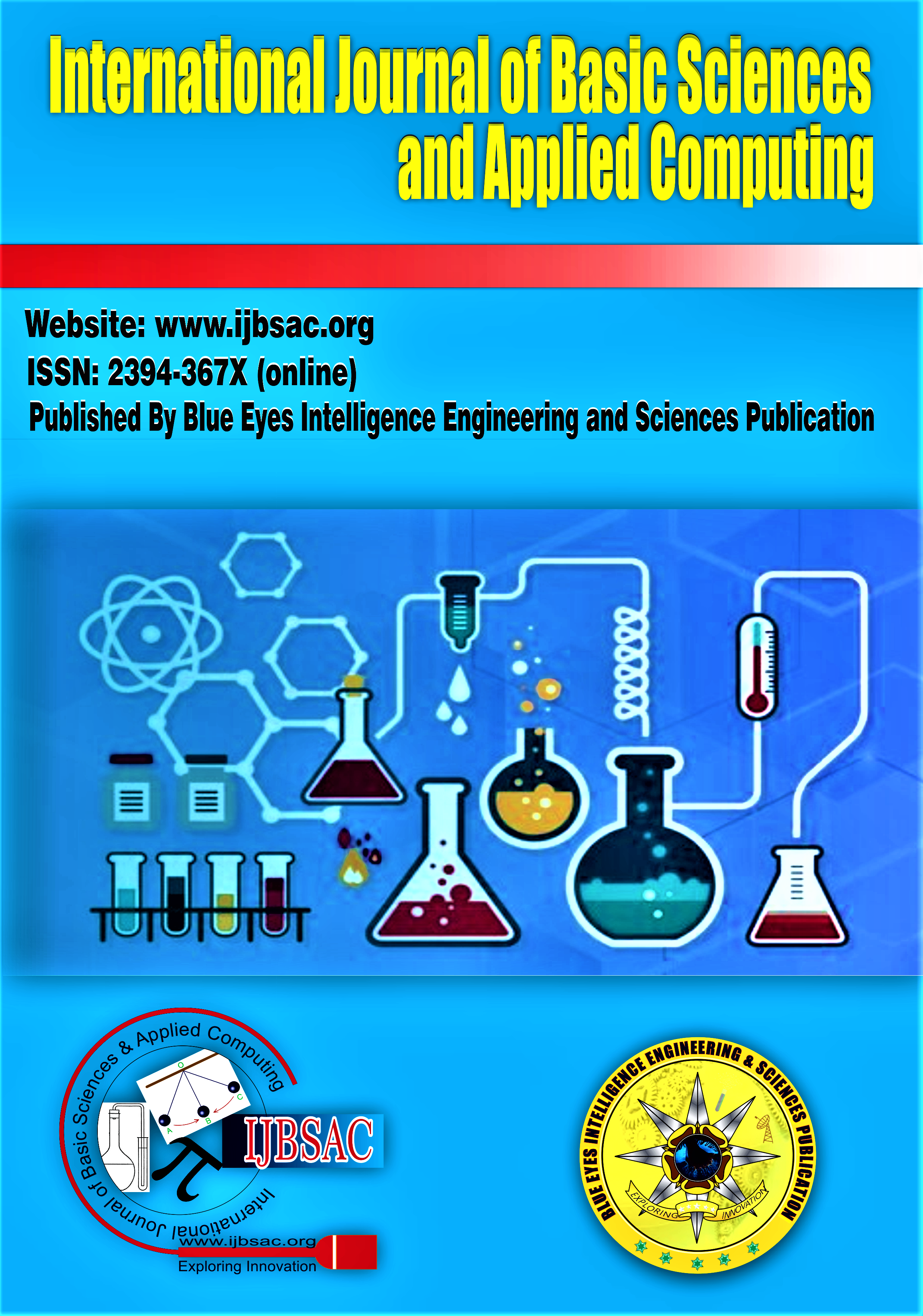Analytical Evaluation of Ava River Quality for Domestic Purposes
Main Article Content
Abstract
Since declining water quality has the potential to significantly alter the hydrological cycle, it has become a worldwide concern. In the last ten years, human activity has had a remarkable impact on the environment due to an unprecedented rise in population, a rapid rate of urbanization, intensification and expansion of agricultural practices and other factors. These factors have resulted in the progressive and ongoing degradation of resources, particularly surface water. In this research study, Ava River Quality was analyzed due to the continuous application of inorganic fertilizers, herbicides and pesticides for crop production and management at the Green Land Vegetable Farm Cluster of Ugboezeji, Abakpa Nike Enugu East LGA stream segment. The continuous application has been found to impact positively on crop quality and yield, but negatively on the quality of water at the downstream segment of the irrigation areas. Biological oxygen demand, nitrate,phosphate, copper and cadmium levels in the water samples analyzed at the downstream segment exceeded the maximum acceptable limit of World Health Organization (2011). It was observed that the amount of inorganic fertilizers, herbicides and pesticides applied by the farmers are quite higher than the quantity required for optimum yields, but inappropriate techniques and timing of application resulted in the occurrence of excess chemicals being flushed into the Ava River. Therefore, it is important to apply strict regulatory strategies and measures in order to safeguard the water body from pollution caused by unfavorable anthropogenic activities, as climate change poses a threat to the preservation of the water bodies' quality for agricultural and residential purposes.
Downloads
Article Details
Section

This work is licensed under a Creative Commons Attribution-NonCommercial-NoDerivatives 4.0 International License.
How to Cite
References
Adeyemo, O.K, Adedokun, A.O, Yusuf, R.K. and Adeleye, E.A. (2008). Seasonal Changes in Physico-Chemical Parameters and Nutrient Loads of River Sediments in Ibadan city, Nigeria. Global NAST Journal, 10 (3), 326 - 336. https://doi.org/10.30955/gnj.000458
Afiukwa, J. N and Eboatu, A.N (2013). Analysis of spring water quality in Ebonyi South Zone and its health impact. American Journal of Scientific and Industrial Research, 4(2), 231 – 237. https://doi.org/10.5251/ajsir.2013.4.2.231.237
Afiukwa, J.N. (2013). Evaluation and Correlation Study of Heavy Metals Load in Drinking Water and Update of Water-related Disease Cases in Ebonyi State rom 2001 – 2011. American Journal of Scientific and Industrial Research, 4(2), 221 - 225. https://doi.org/10.5251/ajsir.2013.4.2.221.225
Akan, J.C., Abdulrahman, V.O.; Ogugbuaja and Reuben, K.D. Study of the physicochemical pollutants in Kano industrial areas, Kano state, Nigeria, Journal of Applied Sciences in Environmental Sanitation, 2009; 4 (2): 89-102
Akaninwor, J.O., Anosike, E.O.; and Egwim, O. Effects of Indomie industrial effluent discharge on microbial properties of new Calabar River, Scientific Research and Essay 2007; 2(1): 001- 005
APHA (2005). Standard methods for examination of water and wastewater (21st edn). American Public Health Association, Washington D.C., USA p: 201-250
APHA/AWWA/WPCF. (2005). Standard Methods for the Examination of Waters and Wastewaters, 21st ed. Washington, DC, USA.
Ayers, R.S. and wescot, D.W. (1985) water quality for agriculture. Food and agriculture organization (FAO) irrigation and drainage, paper No. 29, FAO of the United Nations, Rome, pp. 1-117
Bamigboye, A. Y., Adepoju, O. T. & Olalude, C. B. (2017). “Assessment of Dichlorvos and Endosulfan Pesticide Residue Levels in Selected Fruits and Vegetables Sold in Some Major Markets in Ibadan, Oyo State, Nigeria” Journal of Applied Science and Technology, 22(5), 1-6. https://doi.org/10.9734/CJAST/2017/35005
Chapman D, (ed.). Water Quality Assessments: A Guide to the Use of Biota, Sediments and Water. Environmental Monitoring. Second Edition. UNESCO, WHO, and UNEP. E&FN Spon, London UK. 1996
Dada, A.Y. Evaluation of kano state environmental management program - 1995, on industrial pollution a case study of challawa and sharada industrial areas, unpublished postgraduate diploma project, Dept. of Geography, Bayero University, Kano, 1997
Eziashi, Y. (2015). A probabilistic approach for the groundwater vulnerability to contamination by pesticides: the VULPEST model. Ecological Model, 51, 47–58 https://doi.org/10.1016/0304-3800(90)90057-N
Fakayode, S.O. ( 2005). Impact of industrial effluents on water quality of the receiving Alaro River in Ibadan, Nigeria. African Journal of Environmental Assessment and Management, 10: 1 - 13.
Ibrahim and Udo(2012). Soil and Water Conservation Works. Published by Longman, London pp 83-91.
Izonfuo, L. W.A. and Bariweni, A. P (2001): The Effect of Urban Runoff Water and Human Activities on some physico-chemical parameters of the Epie Creek in the Niger Delta. Journal of Appied Sciences and Environmental Management, 5(1) 47-55 https://doi.org/10.4314/jasem.v5i1.54941
Jumoke, E(1999). Comprehensive Chemistry for Senior Secondary School, 6th Edition. A.Johnson Publisher Ltd.
Micheal, A.M(1998). Irrigation Theory and Practice. Vikas Publishing House PVT Ltd, New Delhi, India.
Norman, E.P. and Mitchel M. Water quality degradation effects on freshwater availability: Impacts of human activities, International Water Resources Association; Water International Journal, 2000; vol. 25 (2) 185-193. https://doi.org/10.1080/02508060008686817
Onyeka, F.A(1999). Analysis and Treatment of Otamili River Futo Bridgehead, Oweri West, Imo State for Domestic and Irrigation Uses. B. Eng, Project Work, Department of Civil Engineering FUTO, Oweri.
Pestle, S. (2000). Physico-Chemical Characteristics of river Ngu. Resource Journal of Chemistry and Environment, 10 (3): 62 - 66.Singh, S.R. and Singh, A.P. Treatment of water containing chromium (VI) using Rice Husk carbon as a new coast adsorbent, http://www.ijer.ir 2012; 6 (4) 917-924
Rustum, R., Adeloye, A.J, Scholz M (2008). Applying Kohonen Self organising map as a software sensor to predict the BOD. Water Environment Resources, 80(1): 32-40 https://doi.org/10.2175/106143007X184500
Taghinia, H. A., Basaravajappa, H.T. and Qaid Saeed, A.M. Heavy metal pollution in Kabiri Rivers sediments, htt://www.ijer.ir 2010; 4 (4) 629-636.





